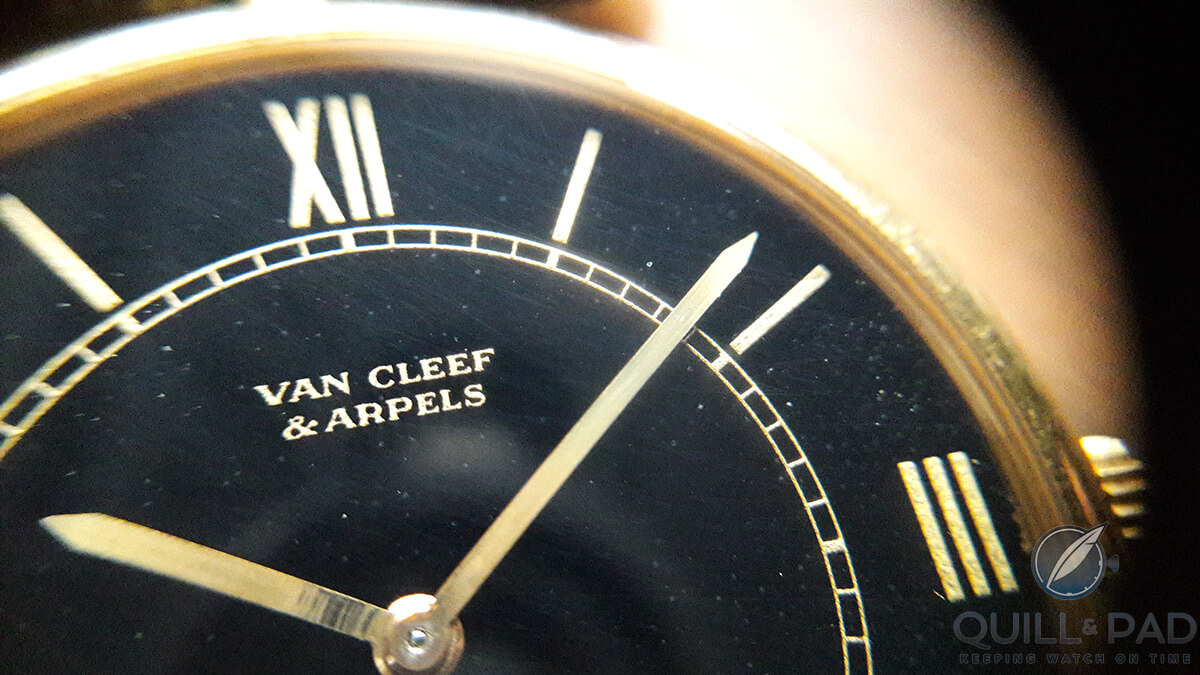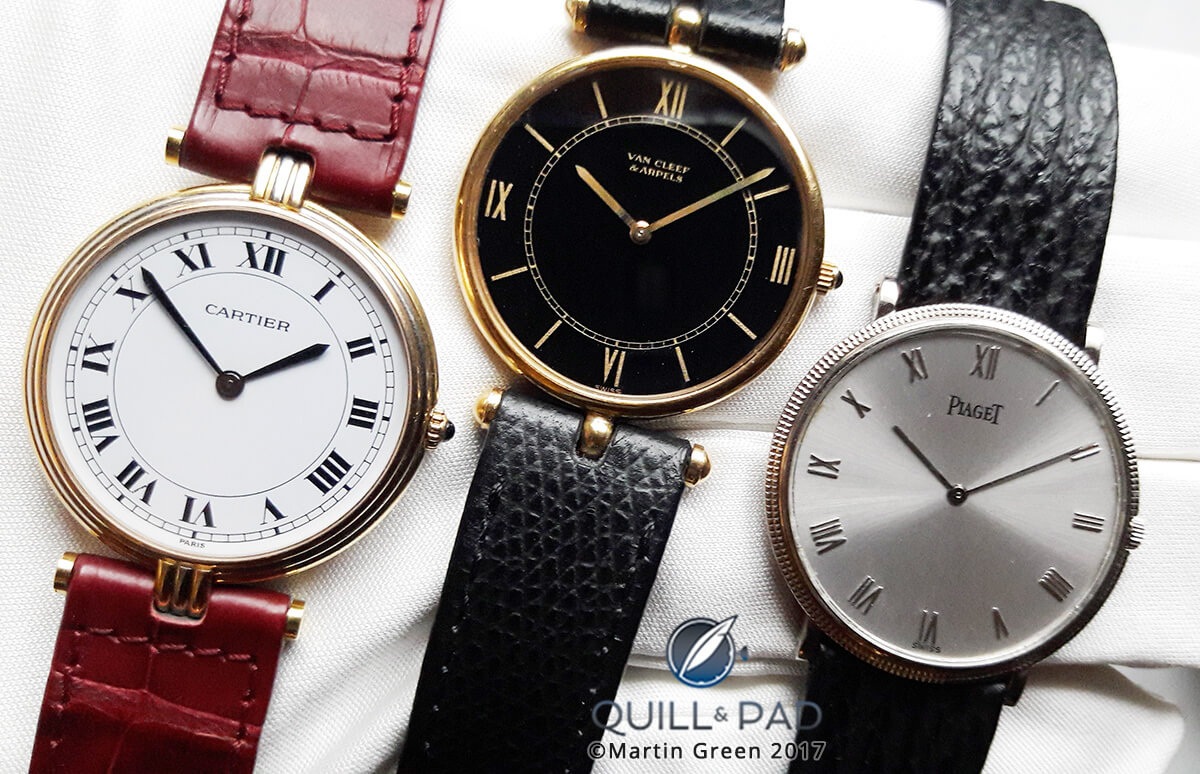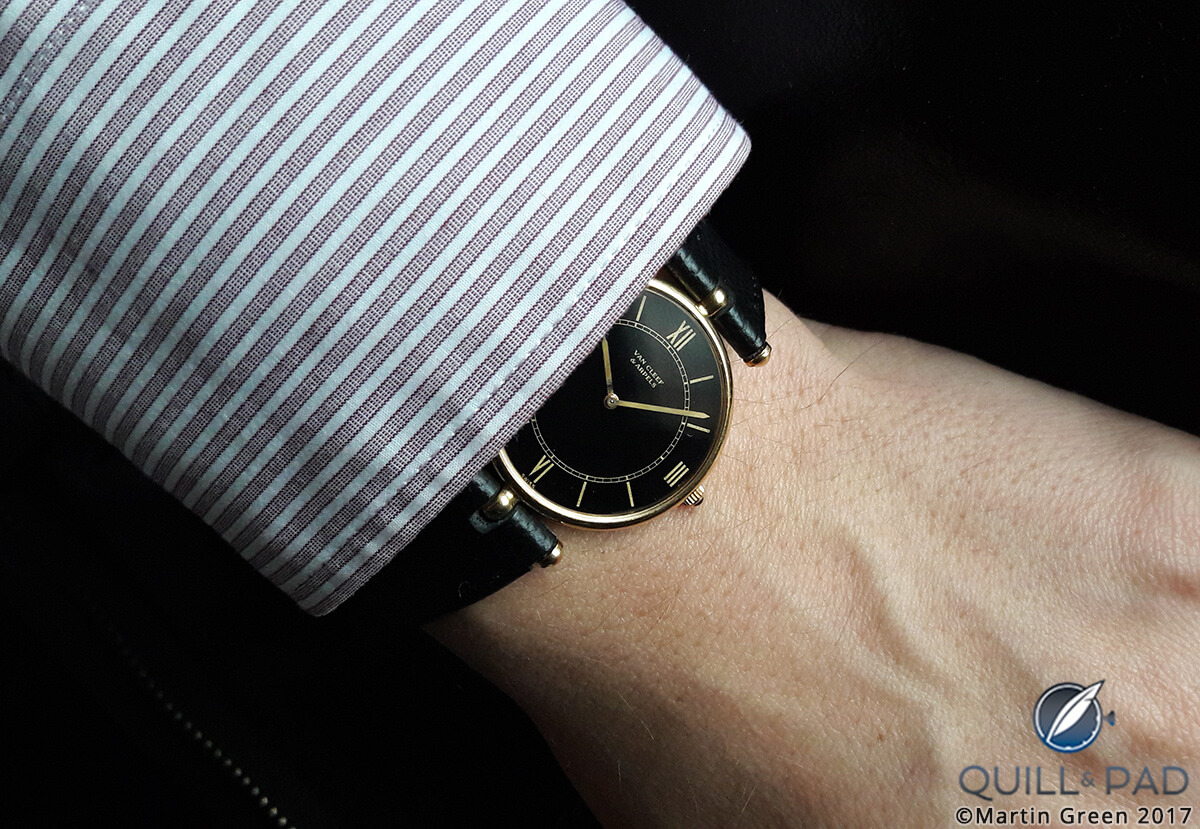by Martin Green
Many of the great marques in the history of watchmaking were driven by prominent figures who ended up with a watch named after them. Such was the case for both Louis Cartier and Pierre Arpels.

Pierre Arpels by Van Cleef & Arpels
Both were born into jewelry and watch dynasties and both made prominent marks on the histories of their respective houses.
While Van Cleef & Arpels occupied a corner at Place Vendôme, Cartier’s headquarter was only a few paces away at Rue de la Paix. Although Louis Cartier (1875–1942) was of a previous generation to Pierre Arpels, who was born in 1919, it was likely that they had at least met. (See more on Louis Cartier in What’s It Like To Get Your Grail Watch And Live With It? The Story Of My Louis Cartier).

Pierre Arpels
Maybe even over cocktails at the Ritz hotel in the company of Ernest Hemingway as Coco Chanel walked past the bar on the way to her apartment upstairs.
I might be getting a bit carried away here, but this small piece of Paris was indeed the stomping ground of some historical individuals.
Intertwined design
In 1934 Louis Cartier developed a new way to attach a strap to a watch: his new case now had a center lug through which a bar was inserted to hold the strap. Although quite an innovative design that he thought enough of to patent it, Cartier only very occasionally used it.

A 1952 retail information card for a Pierre Arpels wristwatch
The idea must, however, have caught the eye of Pierre Arpels because in 1949, the same year that the Cartier patent expired, Arpels used this type of lug on a watch he created for himself.
Although of worldwide fame, neither Cartier nor Van Cleef & Arpels produced vast amounts of timepieces. It was a different time in which nearly all their watches were, as we would call them today, very limited production.

Early 1990s Cartier Three Gold Vendôme Louis Cartier watch and Van Cleef & Arpels Pierre Arpels with similar central strap fixations stemming from Louis Cartier’s patent
Of course Pierre Arpels’ private watch got noticed, and eventually he agreed to make some as well for some of his clients.
Cartier would later return to this type of strap attachment when it introduced the Louis Cartier Vendôme in 1973. True fame for this kind of strap attachment came almost a decade later when Gérald Genta adopted it for the Cartier Pasha he designed.
Intertwined history
Although a Pierre Arpels wristwatch is still in the collection of Van Cleef & Arpels, the model shown here is much older, dating from before the brand’s takeover by Richemont, which bought a controlling 60 percent in the jewelry brand in 1999 before expanding it to 80 percent in 2001 and gaining complete ownership in 2003.

Early 1990s Cartier Three Gold Vendôme Louis Cartier and Van Cleef & Arpels Pierre Arpels with an earlier Piaget Altiplano
The back of the watch shows a four-digit number stamped above a six-digit number, an identification method favored by Piaget. The fact that this Pierre Arpels is also powered by Piaget’s superb ultra-slim, manual wind Caliber 9P suggests that the watch was made for Van Cleef & Arpels by Piaget (for more on this see Piaget 12P: The Birth Of An Ultra-Thin Legacy).
This in itself is interesting because Cartier acquired Piaget and Baume & Mercier (which was at the time owned by Piaget) in 1988. Later all three brands became the seed trio of Richemont’s group of luxury watches.

A close look at the dial of the Van Cleef & Arpels Pierre Arpels
Richemont ownership ironically unites both companies, even more so than any shared ideas in the past. Despite sharing the same strap attachment, and even Roman numerals, the Pierre Arpels has its own flair, distinctly differentiating it from the Cartier.
Its case is roughly one-third thicker than that of a Piaget Altiplano from the same era. Although they share the same movement, the case of the Pierre Arpels is more rounded. As Van Cleef & Arpels didn’t share the movement history of Piaget, the company obviously found it less necessary to show off the movement’s thinness.

Early 1990s Cartier Three Gold Vendôme Louis Cartier and Van Cleef & Arpels Pierre Arpels with an earlier Piaget Altiplano
Using Caliber 9P was, however, an excellent choice by Van Cleef & Arpels. In fact, it is my personal favorite manual wind movement.
The reason why goes beyond its superb pedigree and history and is actually quite practical, and that is because this movement is not only ultra-slim, it is also very reliable.
Although this sounds obvious, making an ultra-slim movement is one thing, also making it reliable is quite another. You can take Caliber 9P through everyday life and it will never skip a beat, even when you decide to go off the beaten track.

Pierre Arpels by Van Cleef & Arpels on the wrist
That also makes the Pierre Arpels a perfect understated watch for every day. It is modest in appearance, yet sublime in execution, making it a private pleasure that you only occasionally have to share with those in the know!
For more information, please visit www.vancleefarpels.com/eu/en/collections/watches/pierre-arpels.
Quick Facts Van Cleef & Arpels Pierre Arpels
Case: 31 x 4 mm, yellow gold
Movement: ultra-slim, manual winding Caliber 9P made by Piaget for Van Cleef & Arpels
Functions: hours, minutes
You may also enjoy:
The Best-Looking Cartier Santos-Dumont Is As Of 2019 The Most Affordable
Leave a Reply
Want to join the discussion?Feel free to contribute!





















































I have a tank watch from the 70s. It’s 18 karat gold. It has a Cartier clasp. It looks exactly like a Cartier tank, but on the face, it says Van Cleef and arpel.
I’ve looked so hard, but I can’t find another one like it. I inherited it from my mother and this might sound silly, but she said that at one point, Cartier was making watches for Van Cleef and Arpel.
Is this true
Thank you
Cheryl
Hi Cheryl, you might find this article interesting https://quillandpad.com/2017/02/10/van-cleef-arpels-pierre-arpels-intertwined-history/
Regards, Ian